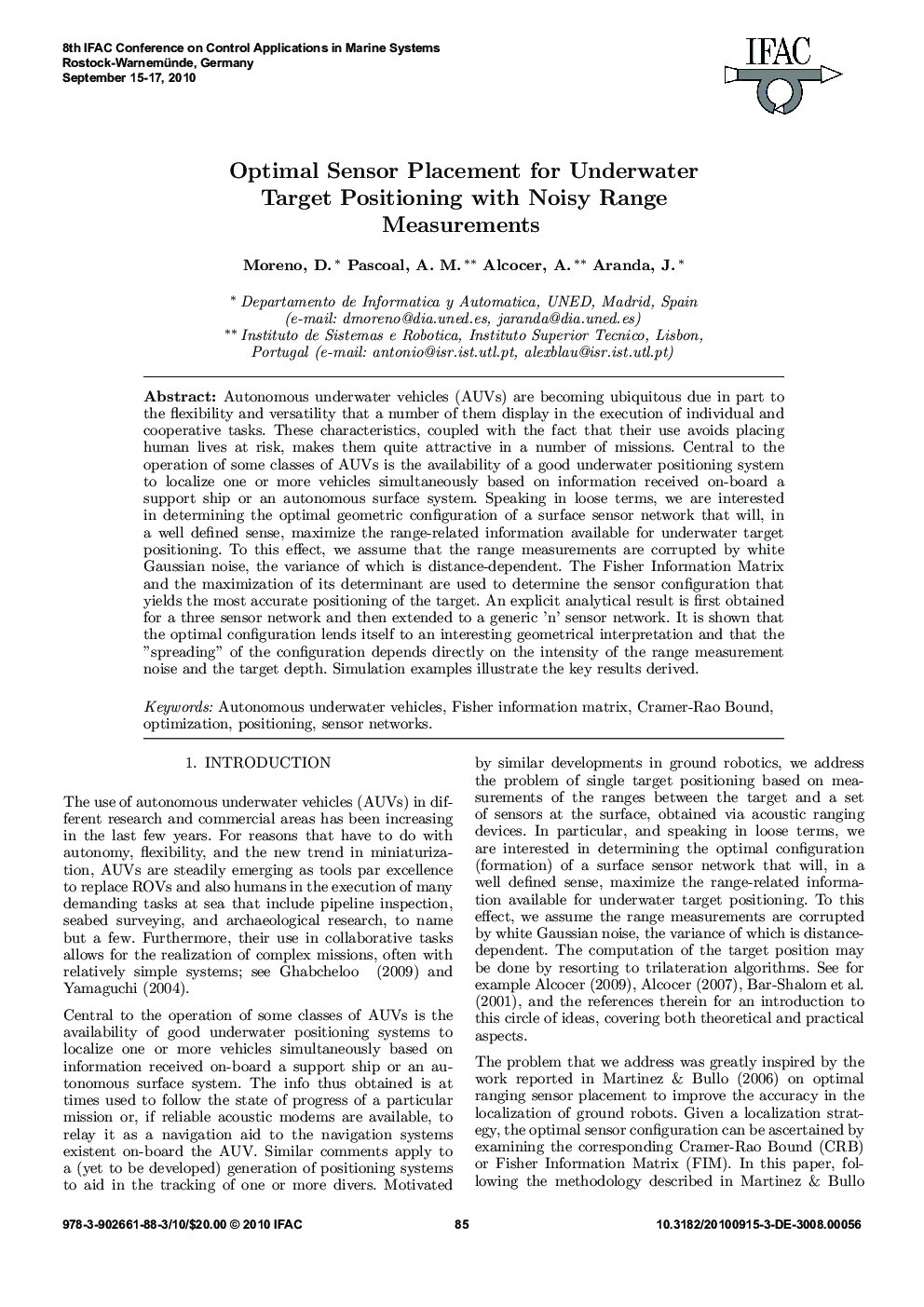| Article ID | Journal | Published Year | Pages | File Type |
|---|---|---|---|---|
| 715408 | IFAC Proceedings Volumes | 2010 | 6 Pages |
Autonomous underwater vehicles (AUVs) are becoming ubiquitous due in part to the flexibility and versatility that a number of them display in the execution of individual and cooperative tasks. These characteristics, coupled with the fact that their use avoids placing human lives at risk, makes them quite attractive in a number of missions. Central to the operation of some classes of AUVs is the availability of a good underwater positioning system to localize one or more vehicles simultaneously based on information received on-board a support ship or an autonomous surface system. Speaking in loose terms, we are interested in determining the optimal geometric configuration of a surface sensor network that will, in a well defined sense, maximize the range-related information available for underwater target positioning. To this effect, we assume that the range measurements are corrupted by white Gaussian noise, the variance of which is distance-dependent. The Fisher Information Matrix and the maximization of its determinant are used to determine the sensor configuration that yields the most accurate positioning of the target. An explicit analytical result is first obtained for a three sensor network and then extended to a generic “n„ sensor network. It is shown that the optimal configuration lends itself to an interesting geometrical interpretation and that the “spreading„ of the configuration depends directly on the intensity of the range measurement noise and the target depth. Simulation examples illustrate the key results derived.
